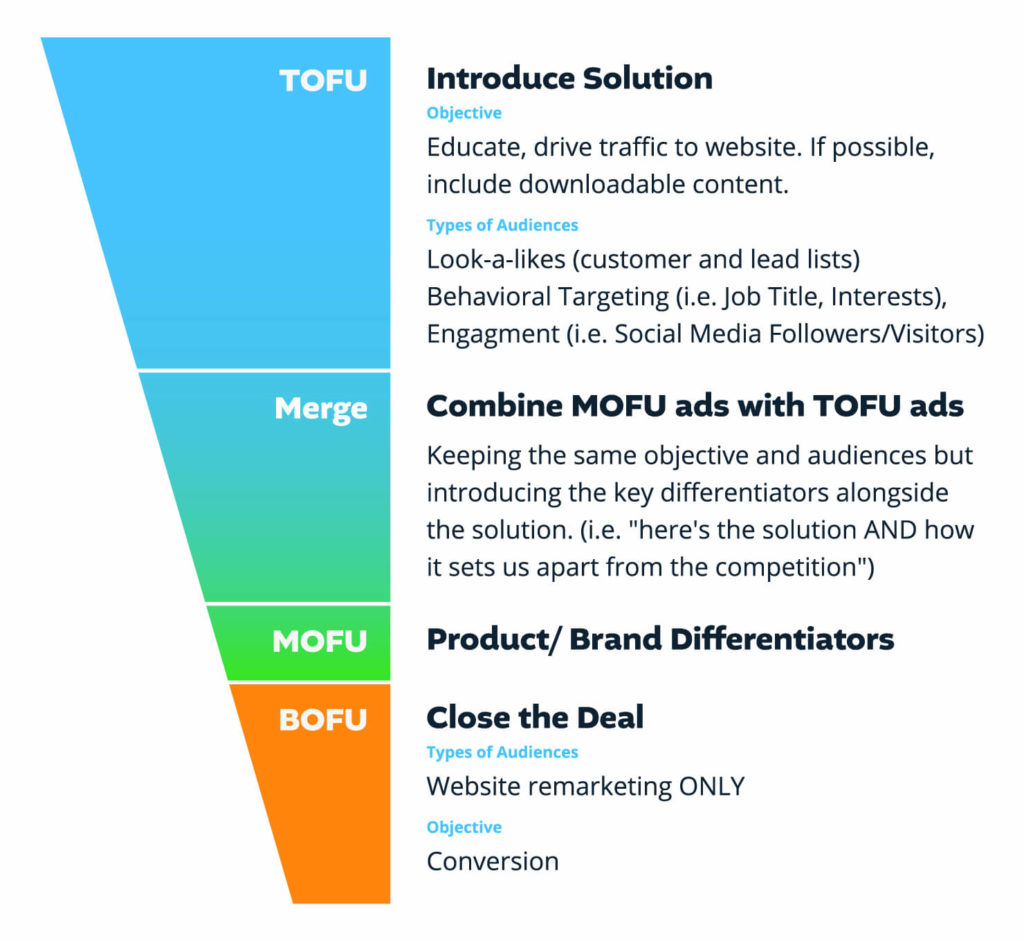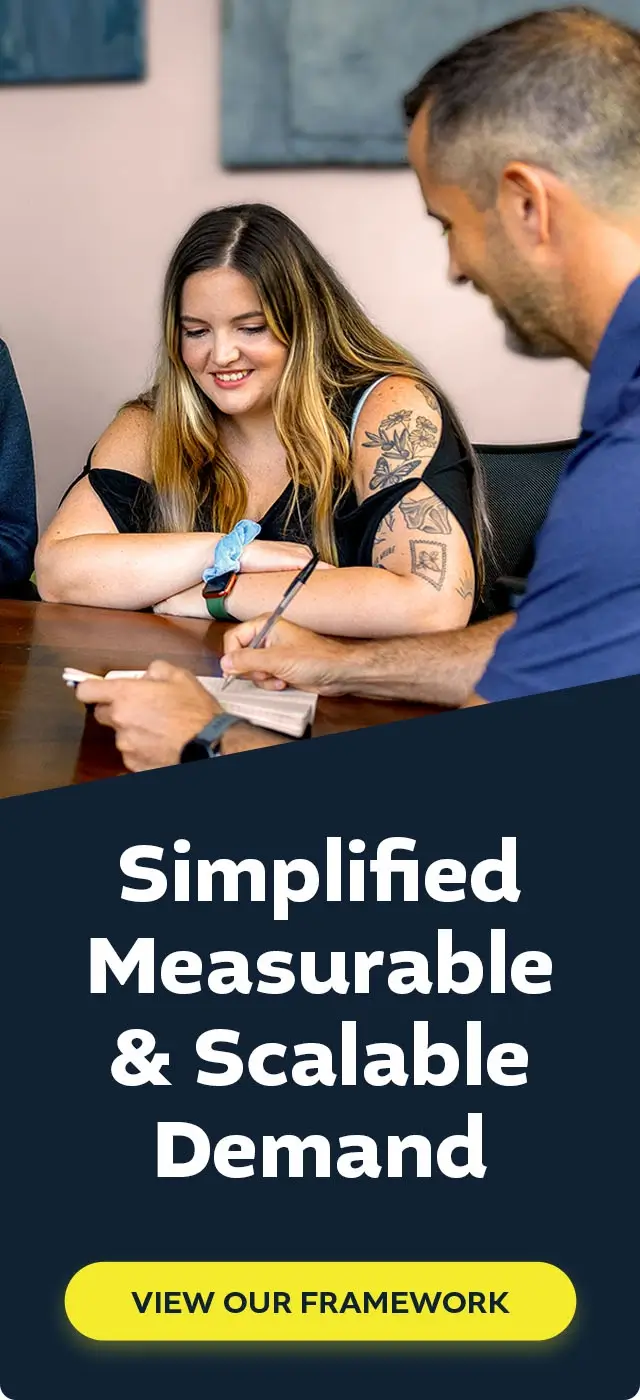Everywhere you look, prices are going up…
The gas station. The grocery store. Advertising placement costs on Google.
Wait? What was that last one?
Yes, even as a B2B marketer, it’s getting harder to navigate the ever-changing landscape of digital advertising, including something as fundamental as ad placement. With costs rising across the board, every penny counts, and it’s becoming increasingly expensive to advertise on both social media and search engines.
But fear not, you can still manage your B2B marketing budget effectively, even with a lean budget of less than say, $2,000 per month. There are legitimate methods that can drive down the cost of B2B customer acquisition while still delivering results.
Here’s a five-step approach to shoring up your marketing systems, from strategy to execution, without asking your CMO or CEO to shell out big bucks for digital marketing.
The Five Steps to Winning With a Small Digital Budget
Step 1: Define Your Target Consumer
The first step to cost-efficient B2B marketing is to understand your target audience. What’s the most pressing challenge they’re trying to solve? What’s stopping them from solving it? How does your product help them solve it? What’s their demographic, job title, income, and location? These questions will help you build a buyer persona document that can guide your marketing efforts.
This is a crucial step in weeding through the minutia to identify 1-2 core targets. Ideally, you’ll agree with the client on the target personas. After all, they know the target user best. You’ll refer to this document later on to inform ad targeting.
Step 2: Carefully Craft Your Messaging
Your messaging is crucial to the success of your marketing efforts. What resonates with your target audience? Gather information from the sales teams that informs you on common objections encountered during the sales process. What unique value propositions does your product offer that are relevant to them? What statistics and supporting points play well among this audience?
Not too dissimilar from our exercise in step #1, we need to understand what resonates best with our target audience. Better yet is finding what messaging created those sought-after “aha” moments that lead to a deal closed, or at the least, another conversation in the sales journey.
I find it helpful to create a one-pager, a cheat sheet if you will, that directs exactly how you’ll talk to these users.
Remember. Simple is better for achieving team alignment.
Step 3: Determine Where Your Consumers Are Consuming
Once you know your target audience, it’s time to determine where they’re consuming content. What digital platforms do they frequent most? Are they on Facebook, LinkedIn, Google Search, or somewhere else?
This information will help you determine how and where you should spend your B2B digital marketing budget. If your goal is to raise awareness about your brand, you may want to consider programmatic advertising or a non-traditional media channel in addition to the usual tech-stack line-up.
You need to meet your core user base where they’re most active, but moreover, where they are most likely to engage your content.
If your goal is to raise awareness about your brand, you may want to consider programmatic advertising or a non-traditional media channel in addition to the usual tech-stack line-up.
This isn’t something you’ll be able to define right away, but as you learn more about which platforms are driving true, quality conversions, you’ll want to shift your ad dollars accordingly.
For instance, if I see in Google Analytics that Facebook and Google Search Ads are working in tandem effectively under assisted conversions, but LinkedIn is less represented in the top conversion paths, I might divert budget from the latter and increase spend to the former.
Step 4: Introduce Your Product and Brand at the Same Time

A common mistake: avoiding education (traffic objective) as a legitimate warm up to lead generation (conversion objective).
Making a buying decision takes time, but you can reduce the number of touchpoints needed to convert a prospect into a lead by properly educating your consumers before asking them to convert on a lead form. Consider combining top and mid-funnel efforts to both present your solution and tie it to your brand without spending a vast amount of resources on a campaign that does little else but drive users to a landing page pleading for a form fill. Focus on education at both the top and middle of the marketing funnel.
Don’t ask for a form fill right away. Instead, educate the user to the point where they can explain how your product helps solve their problem. Clicks are cheaper than conversions, but you still must make them count by delivering on what your ad promised. The user experience doesn’t stop after an ad click.
Though clicks are less expensive than conversion or engagement-oriented campaign, you’ll still need to employ those objectives further down dunnel.
Once you’ve started to effectively drive users to a landing page rich in educational content, you can rely heavily on website retargeting at the bottom-of-funnel level. At this point, it’s perfectly fine to send them to a conversion-focused destination. Feel free to include a form above-the-fold now that your user is aware of the core value proposition and product offering.
Going back to our example from before, we’d want to spend at least 40% of our $2,000 budget on educating our users before ever asking them to convert.
Step 5: Use Sales Feedback to Optimize Your B2B Marketing Efforts
Once your ads are up and running and are bringing in leads, it’s time to optimize your efforts. Establish a constant sales-marketing feedback loop with your sales team. Are the leads within the target of your buyer personas? Are they becoming customers? Which ads are driving actual customers?
Use UTMs to track your ad performance and optimize your efforts based on the data. Spend more on the ads that are driving results and less on the ones that aren’t. The importance of this step cannot be overstated. Though the sales feedback process can be somewhat manual and cumbersome, it’s worth its weight in advertising dollars saved.
Why? Native data doesn’t tell the full story. You’ll want to pinpoint the conversions and leads that are moving forward to the sales-qualified-lead and customer stages. Trace them back to the individual ads that are driving them (*cough* UTM Parameters *cough*), and spend your ad dollars where they’ve proven most effective.
Hyper Effective Targeting = Less Touch points = Cost-Efficiency
Let’s simplify so you can make it all actionable. Cost-efficient B2B marketing is all about understanding your target audience and carefully crafting your messaging and marketing efforts around them. By determining where your target customers are consuming content, introducing them to your product and brand, and educating users before asking for a form fill, you can reduce the number of touch points (and spend!) needed to convert a prospect into a lead.
With a constant sales feedback loop, you can optimize your efforts based on the data and achieve results on a modest budget.So there you have it, folks. With these tips, you can game change your B2B marketing efforts and achieve results on a modest budget. Every penny counts, so use these strategies to drive down the cost of B2B customer acquisition and deliver results for your account(s).


